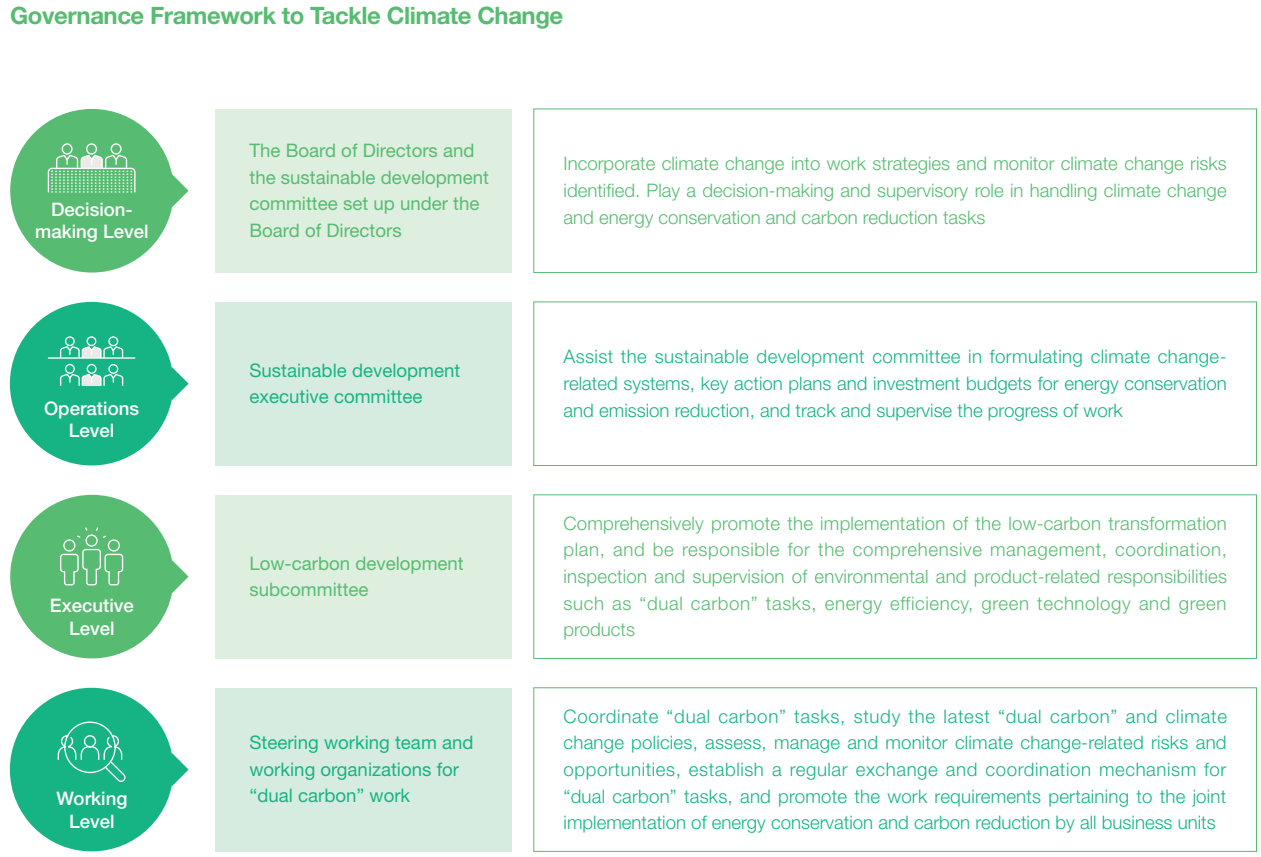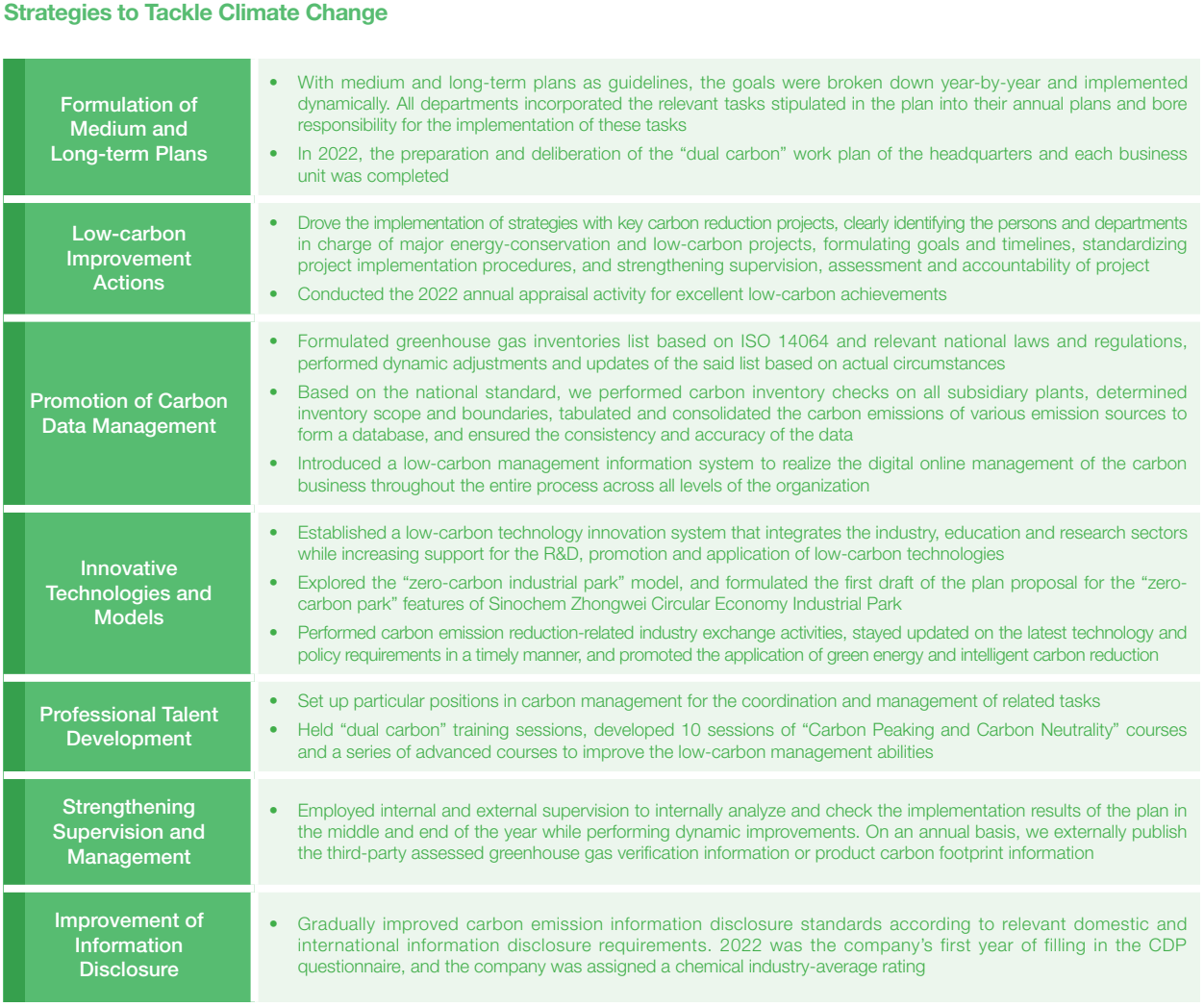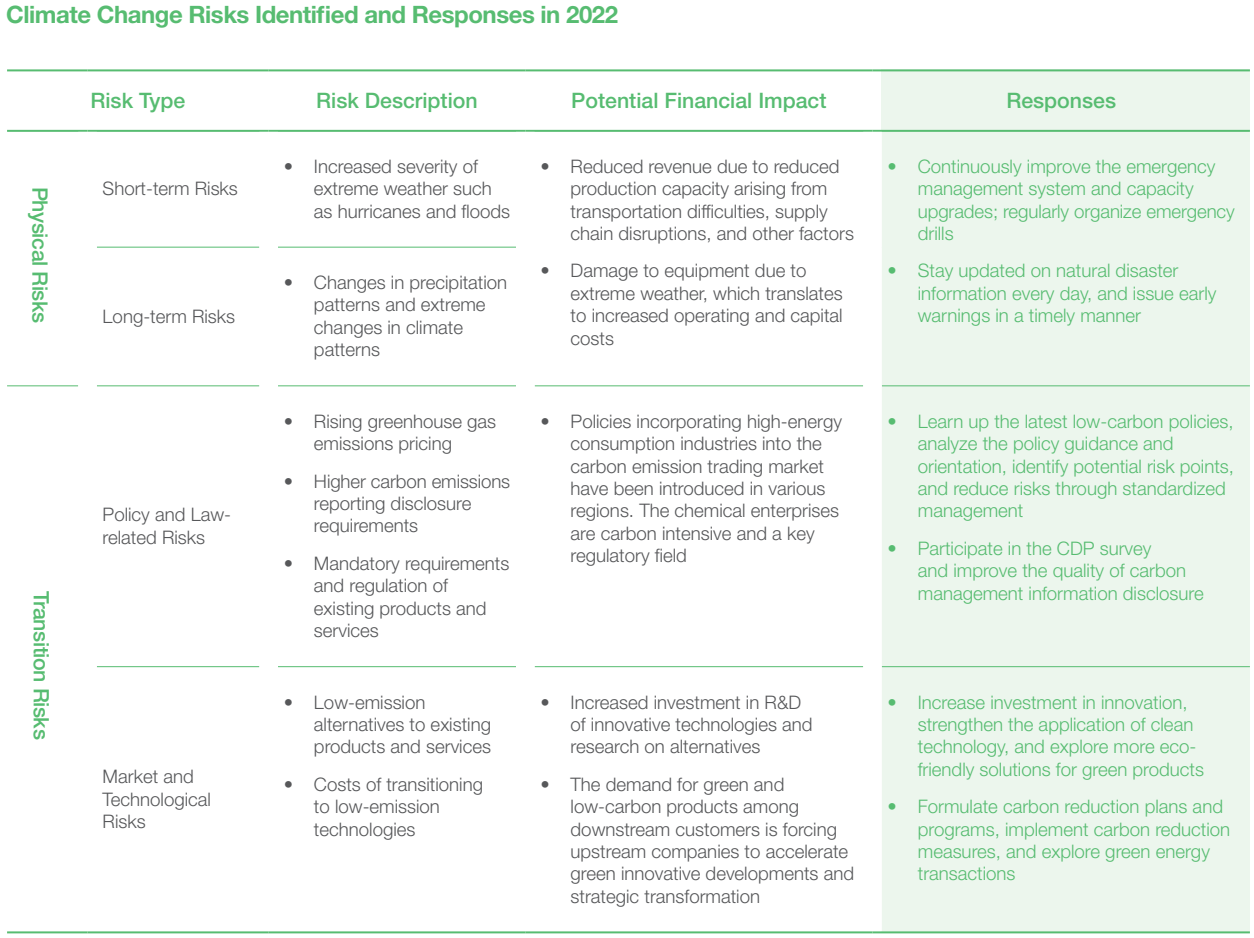Responding to Climate Chage
Handling climate change and low-carbon transition have become common challenges for mankind. Sinochem International has actively responded to the 1.5°C goal of the Paris Agreement and China’s “Carbon Peaking and Carbon Neutrality” goal. Based on the framework of recommendations put forth by the Task Force on Climate-related Financial Disclosures (TCFD), the company incorporated climate change risks into its risk management system, formulated the Carbon Peaking and Carbon Neutrality Action Plan, optimized carbon management working mechanisms and action paths, and comprehensively implemented low-carbon transition.
Governance
Sinochem International has incorporated climate change governance into the sustainable development governance framework, holding discussions based on the topic of “low-carbon development”. “Dual carbon” tasks are initiated by the top level and are performed in a top-down manner. The Board of Directors is responsible for the deliberation and supervision pertaining to the “dual carbon” action proposal, objectives, and implementation of measures.

Strategy
Based on the Carbon Peaking and Carbon Neutrality Action Plan, Sinochem International promotes low-carbon transition from the two stages of “in-depth low-carbon measures” and “zero-carbon oriented measures”. In view of the 14th Five-Year-Plan, the company set carbon reduction objectives, discussing the implementation paths and results while forming a low-carbon transition plan and a special plan for carbon reduction.

Risk Management
Sinochem International has incorporated climate change risks into the company’s risk assessment and management system. The company systematically identifies and analyzes the climate risks and opportunities faced in the company’s business and operations, regularly reviewing and updating them while proactively formulating relevant policies and measures in order to seize opportunities for value creation.

Indicators and Objectives
Sinochem International set climate change and carbon emission reduction goals, spelling out the corresponding responsibilities and plans in the annual performance scorecard. Energy conservation and carbon reduction components are included in the performance appraisal system for the persons-in-charge of the management team. The company regularly reviews the completion of carbon reduction targets, and promotes energy conservation and emission reduction through process upgrades, equipment upgrades, energy substitution, and recycling, to constantly upgrade green and sustainable competitive advantages.

KPIs in 2022年关键绩效:
● Total energy conservation investment:89.65 million yuan
● Greenhouse gas emission per ton of product:1.43 tons of carbon dioxide/ton of product
● Key carbon reduction projects implemented: 32
● Greenhouse gas emissions reduced (YoY): 46,000 tons of CO2 equivalent
● Direct (Scope 1) greenhouse gas emissions: 1,544,578 tons of CO2 equivalent
● Indirect (Scope 2) greenhouse gas emissions: 1,723,777 tons of CO2 equivalent